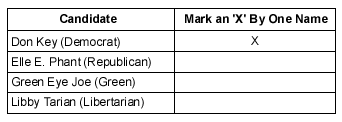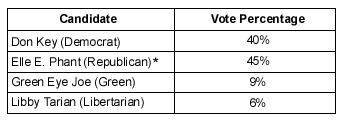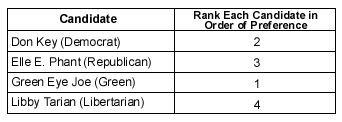Voting Systems
In order to engage young Americans in the voting process we have to do more than simply convince them that their vote is worth something and can make a difference. Young America has to join together to make the individual vote worth something.
So that the topic of voting, and at the same time, democratic points, was clear to you, Engaging Argumentative Essay for presentations and forums, for any kind of preparation and don't worry about quality theses and arguments. Most of the elected offices in this country are single-seat constituency offices, where one individual is elected to represent a district by her/himself. In every one of these districts, the voting system that is used to elect these representatives is a winner-take-all, plurality-win system known as First Past the Post (FPTP).
FPTP:
- Allows candidates to claim victory with less than 50% support;
- Encourages voters to vote strategically, at times settling for their second-choice candidate;
- Depresses voter turnout, as many votes, if cast, do not count;
- Fails to represent the true preferences and desires of the voters.
CASE STUDY
In 1998 Jesse Ventura triumphantly proclaimed, after winning the gubernatorial race in Minnesota, "We wasted them with wasted votes"! Governor Ventura was referring to the notion that if you vote for a candidate not likely to win (third party candidates, generally, and in some districts and races, a major party candidate), you are wasting your vote. Why? Because your vote won't count; in fact, your vote for a candidate not likely to win can and frequently does help the least favored candidate win the day.
Governor Ventura defied this wisdom, and managed to earn enough "wasted votes" to win the election. Who really won, though? The new governor made history after receiving the vote of only 37% of voters. What do the other 63% of voters think about this history-making victory? Do they like Ventura? Would Ventura have been their second choice? Did they actually prefer Ventura but felt a vote for him would take away from the more likely winner, one of the major party candidates?
Asking ourselves these questions does no good at this point, but being a representative democracy, where we elect individuals to act for us and represent our needs, wouldn't it be best if we were not left with these lingering questions?
Solution Instant Runoff Voting (IRV).
IRV allows the voter to express his/her preference on the ballot by rank-ordering the candidates (1, 2, 3, etc...), and (yes, it's true), the preferences expressed mean something! In order to win, a candidate needs to earn at least 50% of the vote (just like in a second-ballot runoff election where the two top candidates in a first-round election square off in a second-round election). Voters can express their views all on one ballot, instead of going to the polls twice, and voters do not have to worry about strategically voting to avoid wasting their vote no vote can be wasted using IRV!
How it Works
When you go to the polls today to fill a single-seat/single-winner office, you mark a single 'X' or punch a single hole next to a single name. The winner is the candidate that gets the most number of votes (in a ten person race to fill one seat, that could mean the winner is elected with as little as 10% of the vote!).
The Ballot FPTP

The Count FPTP

*Winner
Under IRV, instead of marking an 'X' next to just one name, you would rank-order the candidates (1, 2, 3, etc...) for as long as you have a preference of one candidate over another on the ballot. If a candidate does not earn 50% or more after the first vote count, the candidate that finished last is eliminated, and all voters that selected that candidate as their first choice will have their votes transferred to their second choice candidate. This process continues until one candidate reaches the 50% mark.
The Ballot -- IRV

The Count IRV

*Winner
As you can see in this example, and as often happens in reality, the Green party candidate acted like a spoiler under FPTP, taking votes away from the Democrat, helping the Republican win. Under IRV, after two vote transfers, the peoples' true preferences were expressed, and the Democrat won with more than 50% support. After the first count the Libertarian had the least number of votes and was eliminated. Her 6% was transferred, based on votersą expressed preferences, with 1% going to Green, 3% to Republican, and 2% to Democrat. After that transfer, the Green candidate was left with the least number of votes, so his 10% was transferred, based on voters expressed preferences. The 1% that went from Libertarian to Green seemed to give their third choice to Republican, and the 9% of original Green first-choice supporters gave their support to the Democrat. No vote was wasted; no candidate was a spoiler; no voter had to vote strategically every vote counted!
![]()
Reform America, Inc.
Phone:
